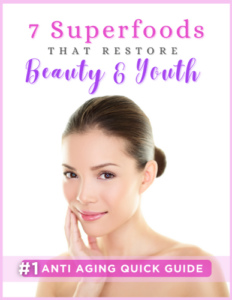Get ready to take control of your summer glow and learn all about tanning skin types. Did you know that the reaction of your skin to UV light exposure results in a tan? This blog post will guide you on understanding different skin types, how they react to sun exposure, and provide effective tanning tips tailored for each type.
Let’s embark on this enlightening journey towards achieving that perfect sun-kissed look safely!
Key Takeaways
- Understand your skin type: Knowing your specific skin type will help you understand how your skin reacts to tanning and how best to protect it from potential damage caused by the sun’s UV rays.
- Take precautions for fair and sensitive skin: If you have skin types 1 and 2, it’s important to start with short tanning sessions, wear sunscreen with a high SPF, protective clothing, seek shade, and avoid peak hours of sunlight.
- Gradual exposure for moderate tanners: For skin types 3 and 4, start with shorter periods of sun exposure to build up a tan over time. Remember to apply sunscreen, moisturize your skin, stay hydrated, wear protective clothing,and seek shade when needed.
- Protect darker skin as well: Even if you have higher tolerance (skin types 5 and 6), protect your naturally dark or black skin using sunscreen with a high SPF while gradually increasing sun exposure times. Hydrate your skin regularly; avoid peak hours; use protective clothing like hats; sunglasses; take breaks in shaded areas whenever possible.
Table of Contents
Determining Your Skin Type for Tanning
To determine your skin type for tanning, you can use the Fitzpatrick skin phototype or skin type classification system.
Fitzpatrick skin phototype
The Fitzpatrick skin phototype system places your skin into one of six categories. This helpful dermatological tool originated from the observations of Harvard Medical School dermatologist Thomas B.
Fitzpatrick in 1975. It defines how sensitive different skin types (I to VI) are to ultraviolet light, both from the sun and artificial sources like tanning beds. This model relies on your genetic disposition and reaction to sun exposure, which is crucial when determining how likely you are to burn or tan in response to UV light.
Skin type classification
Understanding your skin type is crucial when it comes to tanning. Skin types can be classified into different categories based on their reaction to UV light exposure. Here are the main classifications:
- Skin Type 1: This skin type has bright white or pale skin that is very sensitive to UV light. People with this skin type always burn easily and cannot tan because their skin does not produce enough melanin.
- Skin Type 2: Individuals with this skin type have fair skin that usually burns easily and tans minimally. Their skin may turn pinkish or red after sun exposure, and they are at a higher risk of getting sunburned.
- Skin Type 3: People with this skin type generally have beige or light brown skin. They tend to burn moderately but can gradually develop a light tan. It’s important for them to take precautions and protect their skin from excessive sun exposure.
- Skin Type 4: This skin type belongs to individuals with light brown or olive-toned complexions. They have minimal burning tendencies and can achieve a good tan with proper protection against the sun’s harmful UV rays.
- Skin Type 5: Individuals with dark brown or naturally richly pigmented skin fall into this category. They rarely burn, and their ability to tan is excellent.
- Skin Type 6: People with deep dark brown or black skin fall under this classification. They almost never burn and have a natural resistance to the harmful effects of UV radiation.
Understanding Different Skin Types for Tanning
In order to effectively tan your skin, it is essential to understand the different types of skin and how they react to UV light.
Skin type 1
Skin type 1 is characterized by bright white skin that is very sensitive to UV light. Individuals with this skin type always burn easily and cannot tan because their skin does not produce melanin, which is the pigment responsible for tanning.
This means that they are at a high risk of sunburn and should take extra precautions when exposed to the sun or using tanning beds. It’s important for those with skin type 1 to prioritize sun protection by wearing sunscreen with a high SPF, seeking shade during peak hours, and covering up with protective clothing.
Skin type 2
Skin type 2 is characterized by fair to light skin that burns easily and tans minimally. If you have skin type 2, your risk of sunburn is high, and your ability to develop a tan is limited.
This means that you need to take extra precautions when tanning or being exposed to UV light. Make sure to always apply sunscreen with a high SPF, wear protective clothing, and avoid peak hours of sun exposure.
Seeking shade whenever possible can also help protect your skin from harmful UV radiation. Remember, even though it may be tempting to achieve a deep dark tan, it’s essential to prioritize your skin’s health and prevent long-term damage like premature aging and increased risk of skin cancer.
Skin type 3
Skin type 3 is categorized as beige skin that burns moderately but gradually tans to a light brown shade. If you have this skin type, you are lucky because your skin can tolerate more sun exposure compared to skin types 1 and 2.
However, it’s still crucial to protect yourself from UV rays by wearing sunscreen with a high SPF and seeking shade during peak hours of the day. While you may develop a tan with less risk of burning, it’s important not to overdo it and always prioritize the health of your skin.
Skin type 4
Skin type 4 refers to individuals with light brown skin that burns minimally and tans well. If you have skin type 4, you are lucky because your skin has a higher level of melanin, which offers some natural protection against UV light.
However, this doesn’t mean you can skip on sun protection measures. Even though you may tan easily, it’s still important to wear sunscreen with a high SPF, cover up with protective clothing, and avoid prolonged exposure to the sun during peak hours.
Taking these precautions will help reduce your risk of developing skin damage or even skin cancer in the long run. Be smart about tanning and take care of your beautiful complexion!
Skin type 5
Skin type 5 is characterized by naturally dark skin that rarely burns and tans easily. People with this skin type have a deep, dark complexion and their skin produces a higher amount of melanin, which provides natural protection against UV rays.
However, it’s important to note that even though skin type 5 has some built-in protection, it can still be damaged by excessive sun exposure. So make sure to wear sunscreen with a high SPF and take precautions when out in the sun for long periods of time.
Stay safe while enjoying your beautiful tan!
Skin type 6
Skin type 6 is characterized by deep dark skin that rarely burns and tans easily. People with this skin type have a high amount of melanin, which provides natural protection against the sun’s harmful UV rays.
They can stay under the sun for extended periods without experiencing any adverse effects. However, it is still important to practice safe sun exposure habits and protect the skin from excessive UV radiation to reduce the risk of long-term damage such as premature aging or skin cancer.
Applying sunscreen with a high SPF, wearing protective clothing, and seeking shade during peak hours are crucial for maintaining healthy skin despite having a higher tolerance to sun exposure.
Tanning Tips for Each Skin Type
For skin types 1 and 2, it is important to start with short tanning sessions and gradually increase exposure time to avoid burns.
Skin types 1 and 2
Skin types 1 and 2 are the most fair and sensitive skin types. Here are some tanning tips for these skin types:
- Apply a high SPF sunscreen before going out in the sun.
- Wear protective clothing such as hats and long sleeves to shield your skin from UV light.
- Avoid peak hours of sunlight when the UV rays are strongest.
- Seek shade whenever possible to reduce your exposure to harmful UV radiation.
Skin types 3 and 4
Skin types 3 and 4 are less prone to burning and can develop a tan with moderate sun exposure. Here are some tanning tips for these skin types:
- Gradual Tan: These skin types have a natural ability to tan, so start with shorter periods of sun exposure to build up your tan over time.
- Sunscreen Protection: Even though you may tan easily, it’s still important to protect your skin from harmful UV rays. Apply a broad-spectrum sunscreen with SPF 30 or higher before heading outside.
- Timing is Key: Avoid peak hours of sunlight, usually between 10am and 4pm when the sun’s rays are strongest. Opt for morning or late afternoon sun for safer tanning.
- Moisturize Your Skin: Keep your skin hydrated by applying a moisturizer after tanning sessions to prevent dryness and maintain a healthy glow.
- Stay Hydrated: Drink plenty of water while you’re out in the sun to keep your body and skin hydrated, reducing the risk of dehydration.
- Protective Clothing: Wearing lightweight, breathable clothing that covers your skin can provide an extra layer of protection against UV rays.
- Seek Shade: Take breaks from the sun every now and then by resting in shaded areas or using umbrellas when outdoors for extended periods.
Skin types 5 and 6
Skin types 5 and 6 are naturally darker and have a higher tolerance for tanning. Here are some tips to help you achieve a beautiful tan while keeping your skin healthy:
- Protect your skin: Even though you have a higher tolerance for tanning, it’s still important to protect your skin from excessive sun exposure. Use sunscreen with a high SPF to shield your skin from harmful UV rays.
- Gradual exposure: Start with shorter periods of sun exposure and gradually increase the time as your skin adapts. This will help prevent sunburns and minimize the risk of long-term damage.
- Hydrate your skin: Moisturize regularly to keep your skin hydrated, as tanning can cause dryness. Look for moisturizers that contain ingredients like aloe vera or coconut oil to soothe and nourish your skin.
- Avoid peak hours: UV radiation is strongest between 10 am and 4 pm, so try to limit your sunbathing during these hours. Opt for early morning or late afternoon sessions when the sun’s rays are less intense.
- Wear protective clothing: Cover up with lightweight, breathable clothing to provide an extra layer of protection against the sun’s rays. Wide-brimmed hats and sunglasses can also help shield your face from direct sunlight.
- Stay in the shade: Take breaks from direct sunlight by seeking shade periodically throughout your tanning session. This will give your skin some time to cool down and reduce the risk of overexposure.
Importance of Sun Protection
Protecting your skin from the sun is crucial to maintain its health and prevent skin damage. Learn about the importance of sunscreen, protective clothing, and more to keep your skin safe under the sun.
Sunscreen
Using sunscreen is crucial for protecting your skin from the harmful effects of the sun’s UV radiation. Sunscreen works by creating a barrier on your skin that reflects or absorbs the UV rays.
It helps to prevent sunburn, premature aging, and reduces the risk of developing skin cancer. When choosing a sunscreen, make sure it has a high SPF (sun protection factor) of at least 30 and provides broad-spectrum protection against both UVA and UVB rays.
Apply sunscreen generously to all exposed areas of your body before going outside, and reapply every two hours or immediately after swimming or sweating heavily. Don’t forget to apply it even on cloudy days as UV rays can still penetrate through clouds.
Protective clothing
Protective clothing is essential when it comes to sun protection. Wearing long sleeves, pants, and a wide-brimmed hat can help shield your skin from harmful UV radiation. This is especially important during peak hours when the sun’s rays are strongest.
Seek shade whenever possible, and don’t forget to apply sunscreen on any exposed areas of skin for added protection against sunburns and skin damage. By taking these simple steps, you can reduce your risk of developing skin cancer and keep your skin healthy while still enjoying time outdoors.
Avoiding peak hours
To protect your skin while tanning, it’s important to avoid peak hours when the sun’s rays are strongest. This is typically between 10 am and 4 pm when UV radiation is at its highest intensity.
By staying out of the sun during these hours, you can reduce your risk of getting a sunburn or damaging your skin. Instead, opt for early morning or late afternoon sessions when the sunlight is less intense but still provides enough UV exposure for a tan.
Stay smart about timing to keep your skin healthy and safe!
Seeking shade
Seeking shade is an important step in protecting your skin from the harmful effects of the sun. When you spend time outdoors, especially during peak hours when the sun’s rays are strongest, it’s crucial to find shelter under a tree, umbrella, or other shaded areas.
By seeking shade, you can reduce your exposure to UV light and lower your risk of sunburn and skin damage. Remember that even on cloudy days, UV rays can still penetrate through the clouds and cause harm to your skin.
So whether you’re lounging at the beach or going for a walk in the park, make sure to find shade to keep your skin safe.
Additionally, seeking shade not only helps protect against immediate damage like burns but also reduces the long-term risks associated with UV radiation exposure. Prolonged and repeated sun exposure without protection can lead to premature aging of the skin, wrinkles, age spots, and even increase your risk of developing skin cancer.
Conclusion
In conclusion, understanding your skin type is crucial when it comes to tanning. Whether you have fair skin that burns easily or dark skin that tans well, knowing how your skin reacts to UV light will help you protect yourself from sun damage and make informed decisions about achieving a healthy tan.
Keep in mind the importance of sun protection measures such as using sunscreen, wearing protective clothing, and avoiding peak hours of sunlight. Embrace your unique skin type and enjoy safe tanning practices for a beautiful glow all year round.
FAQs
1. What are the different tanning skin types?
Tanning skin types range from medium tan, which is a deeper shade of color, to suntan that results from exposure to the sun.
2. How can I determine my risk of burn or peeling skin from tanning?
You can take a quiz specifically designed to identify your individual burn risk and likelihood of experiencing peeling skin after tanning.
3. Are there ways to get a tan without risking health concerns like burn risks or peeling skin?
Yes! Sunless tanning options exist that provide the desired result without exposing your skin directly to harmful UV rays, reducing burn risks and chances for peeling skin.
4. What should I consider in maintaining my tan lines while ensuring proper skin protection?
While creating attractive tan lines might be tempting, it’s important also focus on appropriate skin protection measures like limiting sun exposure time and applying sunscreen regularly.



